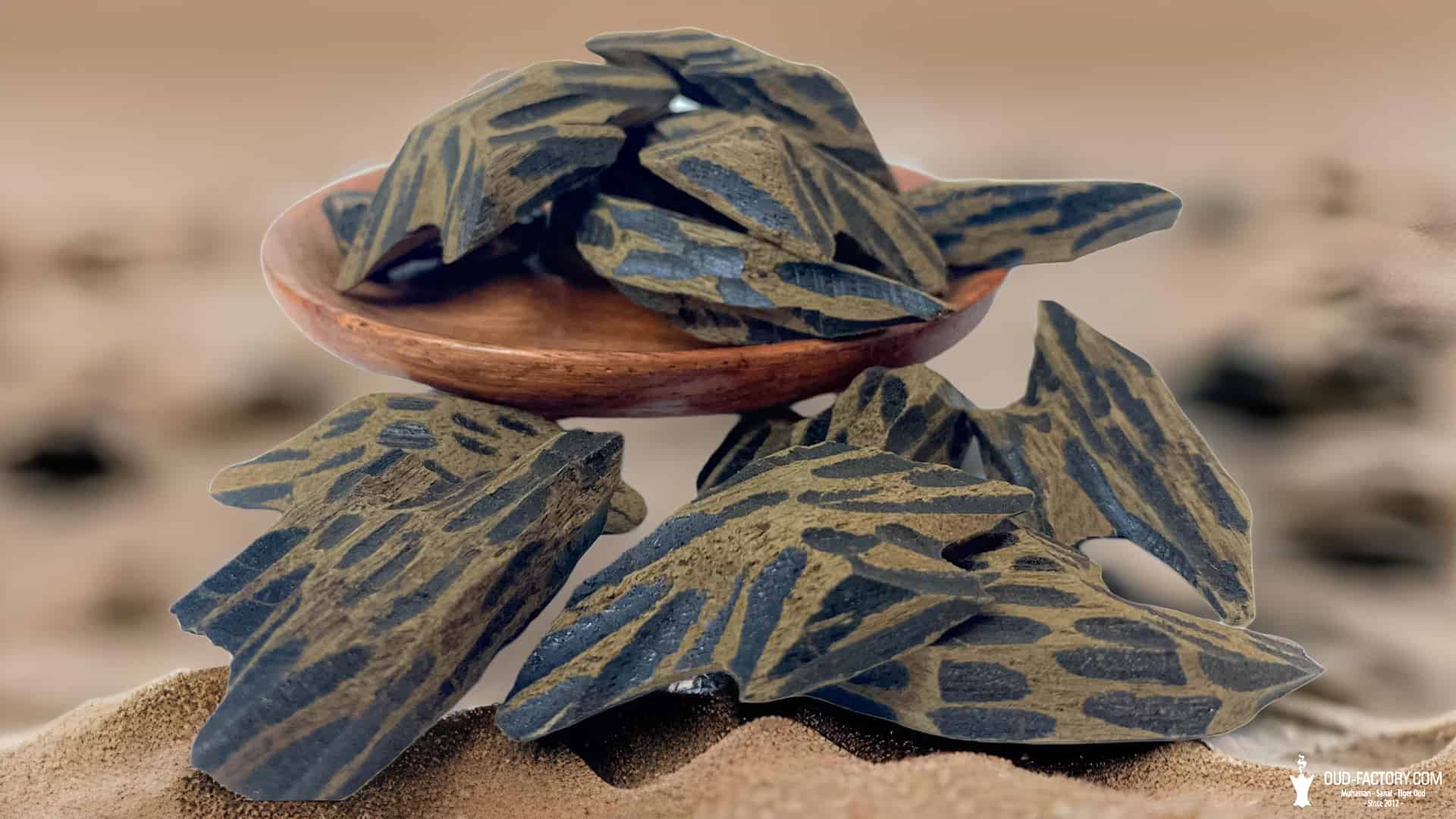Agarwood (Oud) from a historical perspective
Agarwood (Oud) is highly revered in the seminal texts of Hinduism, Christianity, Buddhism, and Islam. As early as 1400 B.C.E., agarwood was described as a fragrant product in Sanskrit texts. Then in 65 B.C.E., Dioscorides detailed several medical applications for agarwood. Knowledge of human-induced agarwood formation was recorded in China as early as 300 C.E. They knew that “cutting a tree causes internal tissue color change within a year due to resin development”. The following article mainly discusses the significance of agarwood for Eastern countries, especially in Islamic culture.
Sampson, the author of the study “History of Use and Trade of Agarwood” said:
In books
There are references to aromatics but none specifically devoted to agarwood in the Qur’an. In the Sūrah 55 (Ar-Rahman), the first section describes the abundance of gifts that Allah has bestowed on men including life itself (55:3), speech (55:4), fruits and dates (55:11), and grains, fodder, and fragrant plants (55:12). Inclusion of fragrant plants among this list of gifts so fundamental to life demonstrates the spiritual reverence for these resources. In Sūrah 83:26, it states that those who refrain from fraudulent temptations will be rewarded in Paradise and given access to a range of resources including fragrant musk.
In research
The prophet Muhammad counsels men and women in the use of fragrance. Men should bathe and perfume themselves for the Friday sermon at the mosque. Women may use perfume at their homes but not at the mosque. Men and women can perfume themselves during sexual intimacy (Thurkill 2009). It is known that the prophet Muhammad preferred the scent of aloes or a combination of aloes and camphor (Book 27 no. 5601) (Sahih Muslim n.d.). The burning of incense in a mosque was practiced by Umar the second caliph, which led to the practice becoming commonplace. There is no record of what was burnt, but it is believed that it was aloes by itself or combined with camphor (Ergin 2014).







